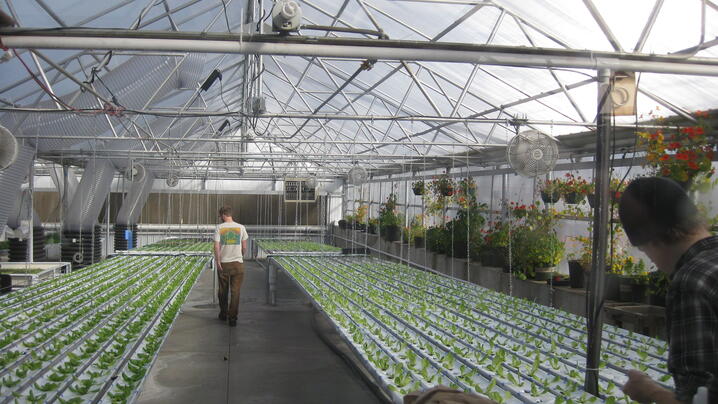
The recent New Partners for Smart Growth Conference in Denver offered so much inspiration concerning local and regional food system opportunities for communities, I’m still digesting it all. Between a pre-conference workshop, a “roots to the rooftop” tour of local projects, and a series of sessions throughout the conference, a diverse group of participants covered a lot of ground. Here’s just a taste of who they were and what they talked about.
A melting pot. As Mayor Paul Soglin of Madison, Wisconsin commented, food is no longer the private property of foodies. Indeed, we heard from speakers who came to their food system involvement from extremely varied backgrounds. Former journalist Pam Hess previously reported from international conflict zones and now directs a center advancing food access and food justice issues in the Washington, DC foodshed. Alphonzo Cross worked in the fashion industry and now operates a healthy corner store Atlanta, Georgia, with a vision for scaling his model up to supply even more residents with the food options they deserve. And as a resident of the Englewood community on Chicago’s South Side, I’m sure Fred Daniels never expected his first job would involve growing organic vegetables or beekeeping right in his neighborhood.
Whether they initially set out to do so or not, the common theme among these individuals is that they are working to advance food systems that return greater benefits to their own communities and regions. Through innovations in production, distribution and retailing, they’re improving access to healthy food, creating jobs, and promoting responsible land use. And whether they spoke as a government insider or outsider, it was interesting to hear them reflect on opportunities for local policies or planning processes to enhance or impede equitable food system development.
Infrastructure development. Distribution was a recurring point of emphasis throughout the food conversations. As Paula Daniels from the Los Angeles Food Policy Council said, the dominant food system hasn’t effectively served those on the margins—i.e., small to mid-sized farms and disadvantaged communities. To address this gap, and often to connect rural and urban communities, food hubs and other aggregation and distribution innovations are emerging across the country. Haile Johnston explained how Common Market Philadelphia operates like a traditional food distributor, but devotes more time and intention toward who they buy from and where the food goes, including an emphasis on institutional buyers. Teresa Weimerslage from Iowa State University Extension explained how food distribution efforts in northeast Iowa leveraged county support for staff time devoted to coordination, and the purchase of a refrigerated truck.
Other examples of virtual supermarkets and neighborhood markets demonstrated creativity in distributing fresh, healthy food to those most challenged by access—and that these strategies work. Arcadia Center for Sustainable Food and Agriculture’s single mobile market, a bright green bus that stops at senior centers, public housing sites and health care facilities, generated more direct sales to SNAP recipients in a year than all of the DC farmers markets combined.
Evidence, data, metrics. Speaking at the pre-conference workshop, Cynthia Pansing of Changing Tastes identified a need for more evidence to ensure decisions regarding food system development are predictable, fair and cost effective. She walked through the recently-released Roadmap for City Food Sector Innovation, which drew from an extensive literature review and collaboration across 5 North American cities and seeks to inform local government planning and investment in food systems. And fortunately, initiatives highlighted throughout the conference provided great stories and visuals, but also hard data of interest to local governments. Theresa Zawacki’s presentation showcased how local government can even provide leadership in this arena, explaining how Louisville Metro Government’s emphasis on data collection and analysis grounded and catalyzed a series of food system activities engaging private sector and community-based partners. Those who missed the popular session, “Is Anyone Better Off?” in which representatives from the American Farmland Trust, Colorado State University Extension and the Vermont Farm to Plate Initiative led a discussion on food system indicators, outcomes and metrics, will have a chance to catch an encore version via webinar later this spring (watch for additional details on this blog).
I hope that others who participated in any of these activities were similarly inspired. If you attended the conference, what lessons did you take back to your community? What questions do you still have? And importantly, what was the most delicious thing you ate in Denver (for me, it was the chili verde spread from MM Local Foods!)?
New, Reduced Membership Dues
A new, reduced dues rate is available for CAOs/ACAOs, along with additional discounts for those in smaller communities, has been implemented. Learn more and be sure to join or renew today!
